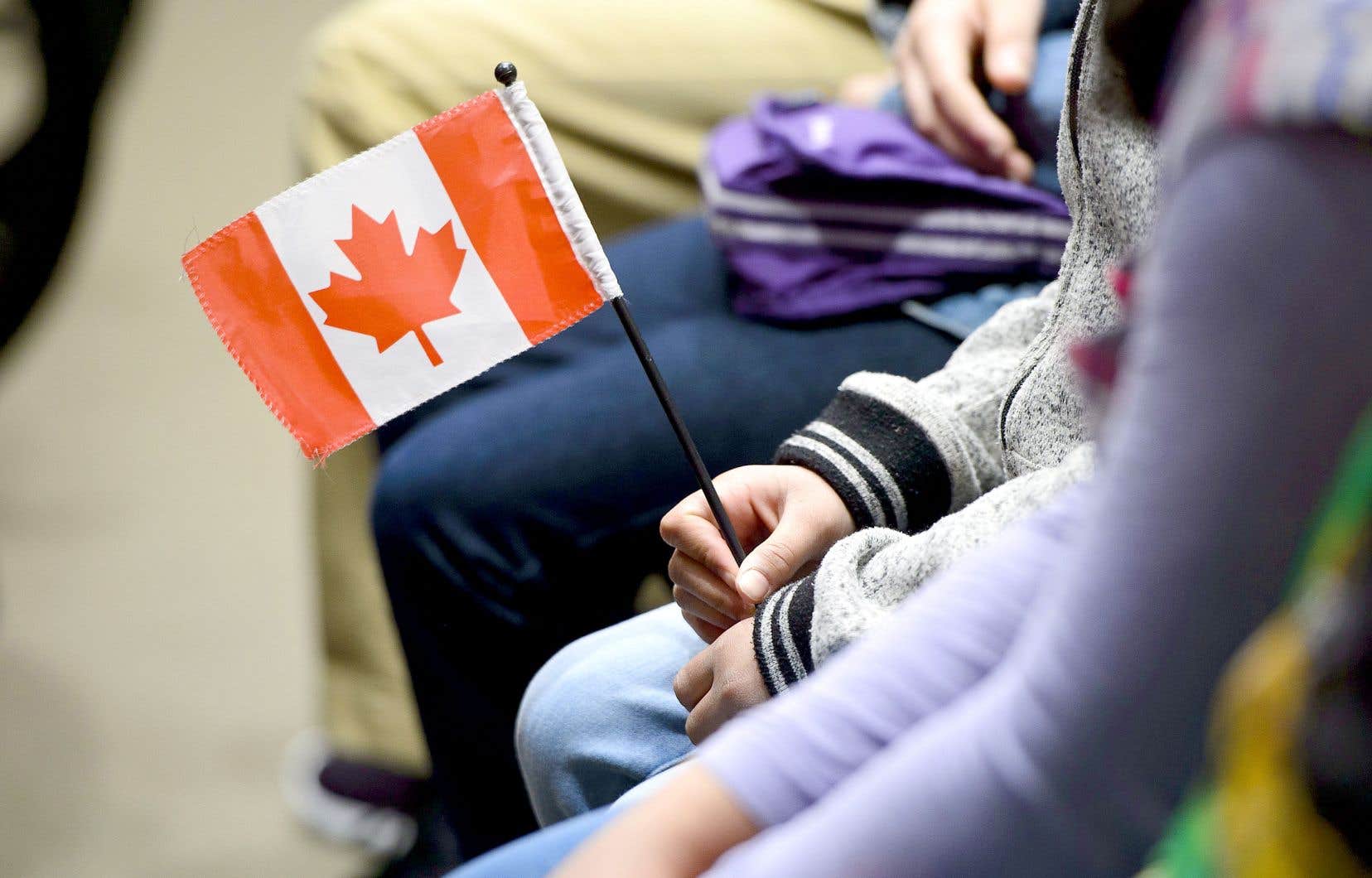Non-permanent residents continue to increase in Quebec and the rest of the country, but the increase is less and less steep. There were 597,140 temporary immigrants in 1er last April, according to the most recent Statistics Canada data released Wednesday morning.
However, the growth in the number of people with study or work permits or asylum seekers has declined compared to last year. This slowdown was already felt in the last three months of 2023, and the most recent statistics confirm it. Between 1er January 2024 and 1er April, nearly 37,000 people were added. In comparison, this increase was 57,000 temporary immigrants between 1er July 2023 and 1er October 2023.
At the national level too, “this is a decline compared to the record levels recorded in the second (+233,361) and third (+312,758) quarters of 2023,” notes Statistics Canada in its report.
Non-permanent residents include 189,962 asylum seekers, or 32% of the total. This proportion remains stable, despite the government’s stated desire for several months to reduce their number. Last week, Prime Minister François Legault quantified this target for the first time at a 50% reduction in those on the territory within a year.
Among all these people who have requested protection from Canada, around 38,000 have already been approved by Ottawa but are waiting for Quebec to give the green light to their permanent residence. This is therefore not an issue of administrative delays: these files are on hold because the province has chosen to take 3,550 “refugees recognized locally” per year, which creates an accumulation, known to Minister Christine’s office Fréchette, we were confirmed.
The number of temporary workers, from two major programs, now stands at more than 255,000. Mr. Legault also asked the federal government to reduce their number by 50%, at least those of the International Mobility Program (PMI), which he considers himself less “anchored to the labor market”. “In the PMI, there are a lot of people in Montreal, a lot of people in low-paid jobs, so that’s what we’re going to work on together,” he declared after his meeting with his counterpart Justin Trudeau.
As for temporary immigrants with a study permit, this is the category that has been the most stable since the end of last year with 124,000 study permit holders. Finally, there are 26,000 family members of other permit holders, i.e. spouses and their children.
Within the country itself, Statistics Canada notes that Alberta continues to gain inhabitants thanks to interprovincial migration, mainly from Ontario and British Columbia.
Why are there so many temporary workers?
The answer is complex. Globally, the United Nations High Commissioner for Refugees notes a “historic increase in the number of forced displacements, reaching 120 million people by the end of May 2024.” Quebec is therefore not immune to this increase in people in need of protection, particularly in the face of the increase in conflicts. Canada ranks 5e world rank among the countries receiving the most individual asylum requests, but most of the displaced are in countries neighboring theirs. For example, in Lebanon, 1 in 6 people are refugees. In Canada, it’s more like 1 in 120 people.
As for temporary workers, faced with the labor shortage, it was the Legault government itself which requested flexibility from Ottawa in the Temporary Foreign Worker Program. This program is different from the PMI, targeted by Mr. Legault. Its principle is that of last resort: employers must normally demonstrate that they have attempted to recruit locally. However, Quebec has had this obligation lifted for 267 professions registered on a simplified processing list, to the great dismay of unions. In these positions, the province does not limit the proportion of temporary workers an employer can hire, unlike the rest of Canada.
Quebec also invests millions to recruit abroad, according to a compilation from Duty.
Observers also argue that this increase in temporary workers is a consequence of maintaining the thresholds for permanent residents, while the labor market was lacking employees. “Lowering the thresholds for permanent residents does not reduce economic demand for immigration,” summarizes Mireille Paquet, holder of the Research Chair in Immigration Policy at Concordia University.
“We have lost sight of the fact that at the root of the “temporary crisis” is the drop in Quebec’s targets in 2020,” notes Stephan Reichhold, director of the Table de concertation des organizations serving refugees and immigrants (TCRI).
Quebec has granted permanent residence to around 50,000 people per year since 2009. During this time, Ottawa has increased its targets for permanent residents, notably drawing a greater share of its permanent immigration from the temporary pool.
“Demand is redirecting towards other ways,” explains Professor Paquet. The two main categories of immigration are “communicating vessels” also described the Quebec Employers Council.
“The fact that we know that it is very difficult to have permanent residence in Quebec, that creates a tendency to go through temporary,” Mr. Reichhold also adds. A “simple” option is available to the Legault government, he says: “To reduce the number of temporary workers who are already here, we can make them permanent. » He recalls that tens of thousands of people who were accepted on humanitarian grounds are also waiting for permanent residence in Quebec, just like people with family sponsorship.
